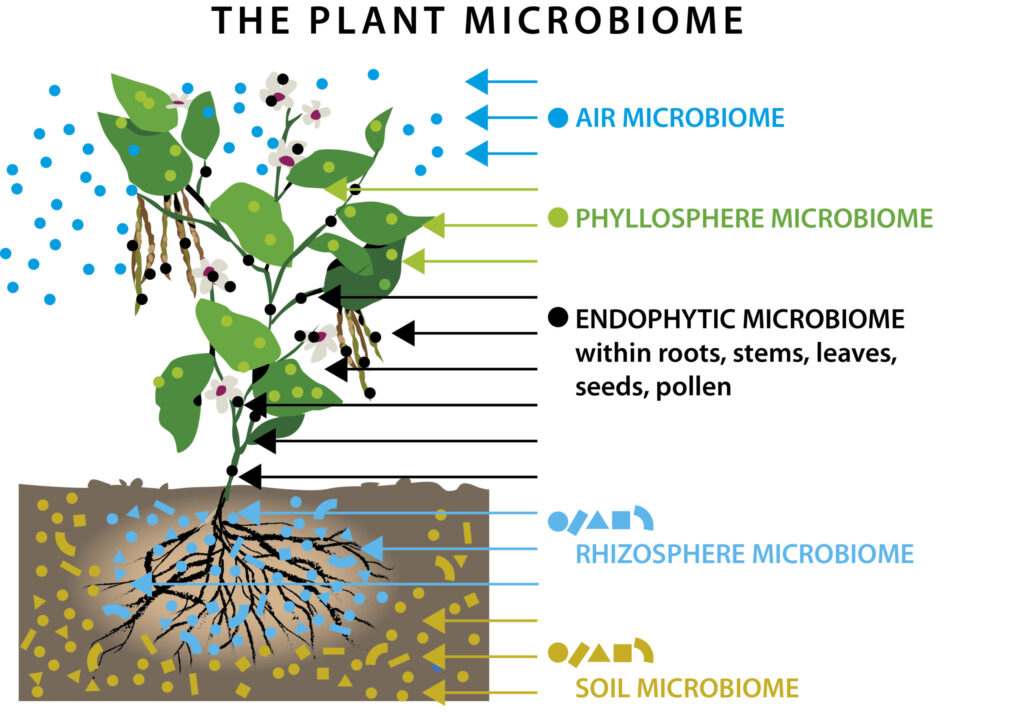Agriculture is in a time where the focus is increasingly placed on the subject of soil microbiology and “soil health”. Regular discussions across the spectrum, between the media, producers, advisers, salespeople, tertiary academic and research institutions and input suppliers occur.
Measurement and the quantification of soil in terms of “soil life” and so-called health levels, or guidelines, are done. The past two to three years have also been marked by workshops and conferences on this topic.
The available information from over the past year or two is increasingly insightful, of which probably one of the most interesting is the plant’s association with micro-organisms; known as a plant microbiome. All microbes associated with a living plant are collectively known as a microbiome. The plant biome is important, in that microbes closely interact with the plant and can have a clear influence, or contribution, to the plant’s growth, development and health (meaning a direct impact on profit margins for growers).
The concept is indicated next to this in Figure 1.
The phyllosphere is defined as the above-ground plant surface that includes leaves, stems and flowers. These plant elements can host a variety of organisms. These organisms are known as epiphytes and are exposed to factors such as wind, temperature and radiation; the latter therefore causes the microbes to vary between seasons.

Figure 1 : A schematic of the plant microbiome (Source: neutrog.com.au).
The endosphere is the microbial environment within plant tissue, including the volumes within and between plant cells in leaves, stems and roots. These organisms are known as endophytes and can enter the plant through the root tips, natural openings in the plant tissue, or can colonise during early development of the plant.
The rhizosphere is the robust microbial environment on and around the plant’s roots, including the near soil volume around the roots. These organisms include those that can promote plant growth through increased bioavailability of elements from the soil to the plant in question. At the same time, anti-microbial compounds are secreted that suppress diseases and pests.
The realisation happens that the “large scale use” of chemicals on the soil does have an impact on soil microbiological life. Furthermore, all life in the soil is not necessarily good in terms of crop cultivation, and for this reason the presence of “beneficial” organisms is sought, and therefore balances between beneficial and harmful organisms. There are differences in organism association and populations between annual crops (eg maize, wheat, soybeans, sunflower, or peanuts) versus perennial crops (eg tree species, grapes, etc.). With the annual crops, high populations will be found during the growth of the crop in question, with a large levelling off after maturation and death.
During rest or fallow of a dry land, species numbers will decrease greatly, in the absence of roots. In contrast, population numbers and fluctuations in a permanent crop will follow a different dynamic. The role of the microbiome and its relationship with plant health, plant production and biochemical cycles should receive as much consideration as the plant itself (Turner et al. 2013).
Sources:
Microbika, 2023. Unlock the Potential of the Microbiome. https://www.microbika.com/approach.
Turner et al., 2013. The plant microbiome. Genome Biology 2013, 14:209 http://genomebiology.com/2013/14/6/209.
Contact details:
The article was compiled by Dr Chris Schmidt, Kynoch Fetiliser. For more information, contact him at (+27)82-885-8134, or send an email to chris.schmidt@kynoch.co.za.









